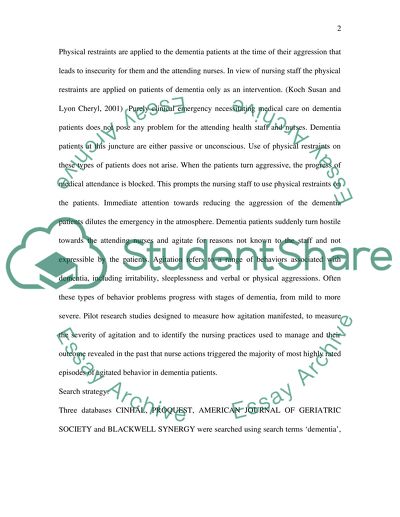Cite this document
(Working With People With Dementia Essay Example | Topics and Well Written Essays - 1750 words, n.d.)
Working With People With Dementia Essay Example | Topics and Well Written Essays - 1750 words. https://studentshare.org/health-sciences-medicine/1510319-physical-restraint-use-on-people-with-dementia
Working With People With Dementia Essay Example | Topics and Well Written Essays - 1750 words. https://studentshare.org/health-sciences-medicine/1510319-physical-restraint-use-on-people-with-dementia
(Working With People With Dementia Essay Example | Topics and Well Written Essays - 1750 Words)
Working With People With Dementia Essay Example | Topics and Well Written Essays - 1750 Words. https://studentshare.org/health-sciences-medicine/1510319-physical-restraint-use-on-people-with-dementia.
Working With People With Dementia Essay Example | Topics and Well Written Essays - 1750 Words. https://studentshare.org/health-sciences-medicine/1510319-physical-restraint-use-on-people-with-dementia.
“Working With People With Dementia Essay Example | Topics and Well Written Essays - 1750 Words”. https://studentshare.org/health-sciences-medicine/1510319-physical-restraint-use-on-people-with-dementia.


